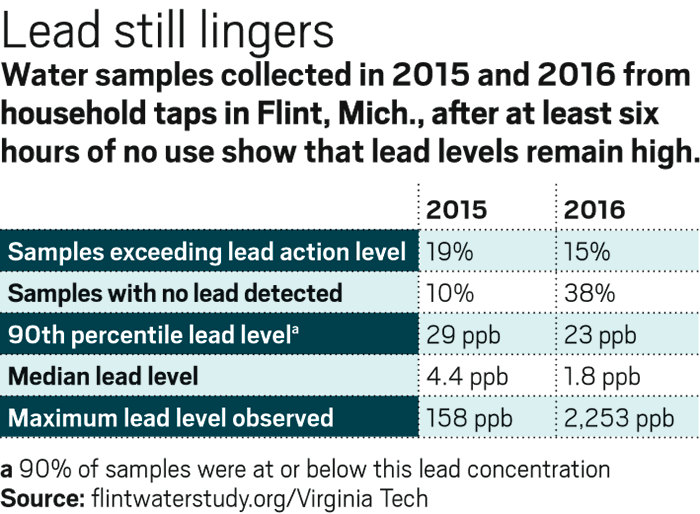Advertisement
Grab your lab coat. Let's get started
Welcome!
Welcome!
Create an account below to get 6 C&EN articles per month, receive newsletters and more - all free.
It seems this is your first time logging in online. Please enter the following information to continue.
As an ACS member you automatically get access to this site. All we need is few more details to create your reading experience.
Not you? Sign in with a different account.
Not you? Sign in with a different account.
ERROR 1
ERROR 1
ERROR 2
ERROR 2
ERROR 2
ERROR 2
ERROR 2
Password and Confirm password must match.
If you have an ACS member number, please enter it here so we can link this account to your membership. (optional)
ERROR 2
ACS values your privacy. By submitting your information, you are gaining access to C&EN and subscribing to our weekly newsletter. We use the information you provide to make your reading experience better, and we will never sell your data to third party members.
Consumer Safety
New rule for lead in drinking water may reduce US public health protection
Updated regulation would improve public notification but slow replacement of lead pipes
by Janet Pelley, special to C&EN
October 16, 2019
| A version of this story appeared in
Volume 97, Issue 41

On Oct. 10, the US Environmental Protection Agency released the first major revision to its 1991 rule controlling lead and copper in drinking water. If the rule is finalized, citizens will receive speedier alerts of lead problems, but replacement of lead service lines will slow. The rule doesn’t address funding gaps that prevent full protection of public health.
Lead is linked to lowered intelligence in children, and the EPA considers it unsafe at any level. It enters tap water when corrosive water dissolves the metal from lead pipes. According to the Natural Resources Defense Council, roughly 5.5 million Americans tap into water systems that exceed 15 µg/L, the level at which systems must take corrective action. Canada has set an action level of 5 µg/L, a target eyed by the European Union.
The new US rule doesn’t strengthen the lead action level but does introduce a lower trigger level of 10 μg/L that requires additional monitoring if tap water exceeds this concentration. The rule also mandates that water providers notify citizens 24 h after receiving test results showing that water exceeds the 15 µg/L action level, versus 30 days under the old rule.
Many experts have called for mandatory removal of all lead pipes—even when lead is below 15 µg/L. Instead, the new rule weakens replacement guidelines. Whereas the old rule directed water utilities to annually replace 7% of lead pipes in systems that exceed the action level, now just 3% of lead pipes must be replaced annually, delaying lead pipe elimination. “The way the rule is written, most water utilities will never be required to remove all their lead service lines,” says Elin Betanzo, founder of consulting firm Safe Water Engineering.
State programs that implement the rules are already underfunded and unable to provide comprehensive oversight for existing rules, Betanzo says. The increased complexity of the new rule adds to this burden. “This means that the proposed requirements will likely not have adequate implementation and oversight, resulting in an increase in spending but a decrease in public health protection,” she says.
The EPA is accepting comments on the proposed rule revision before finalizing it.





Join the conversation
Contact the reporter
Submit a Letter to the Editor for publication
Engage with us on Twitter